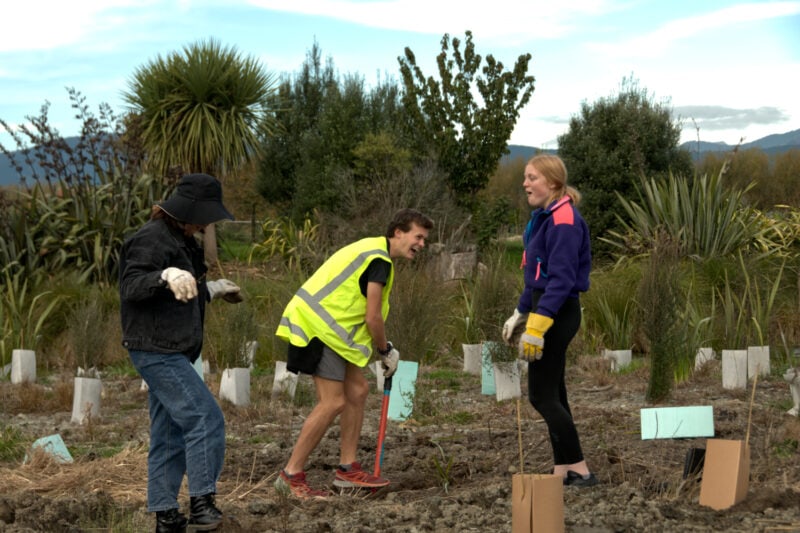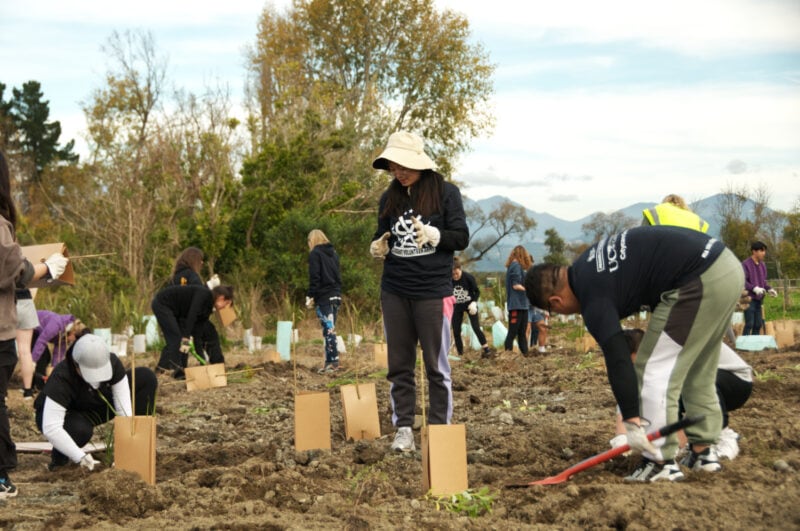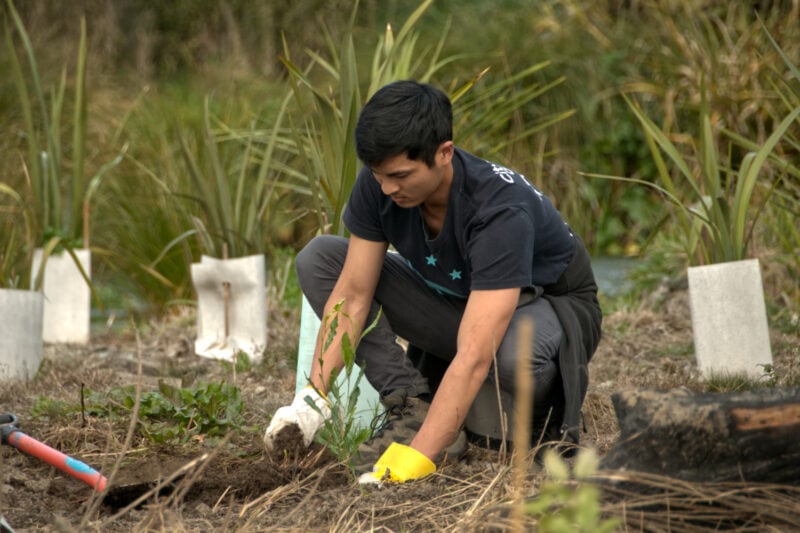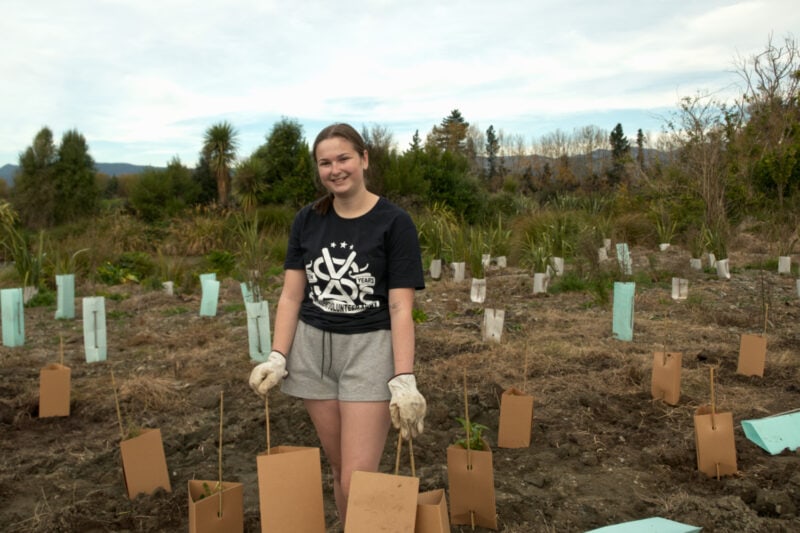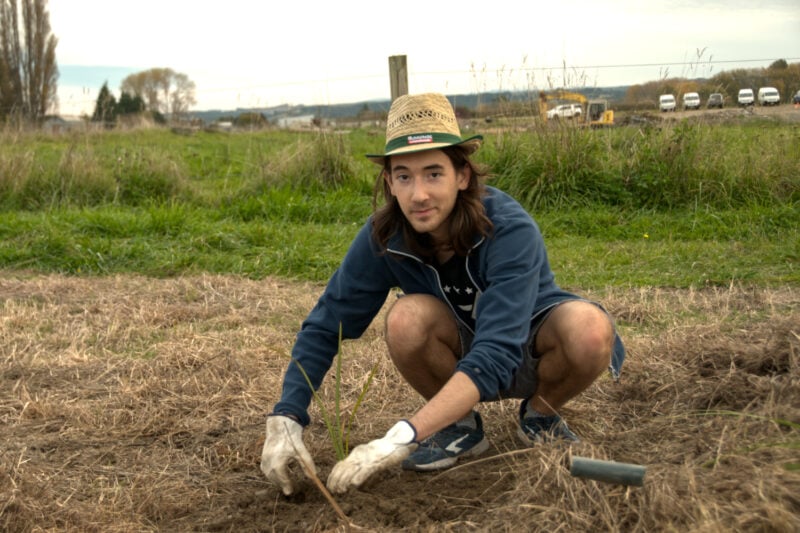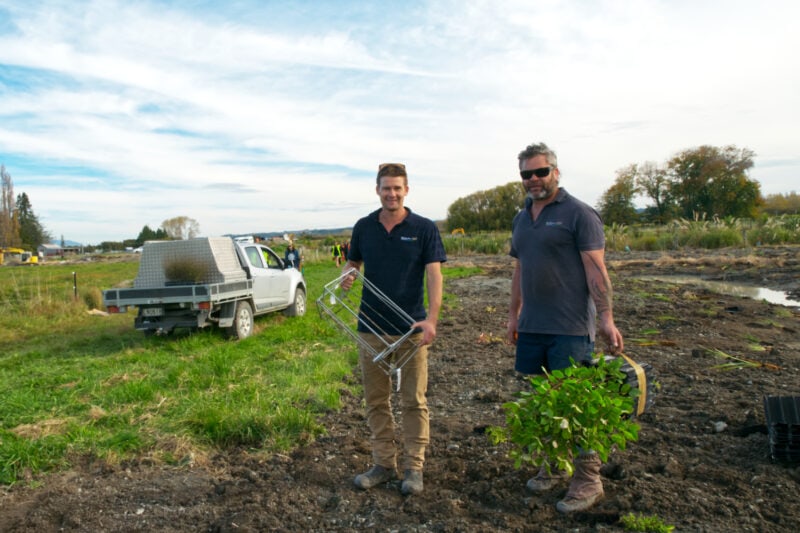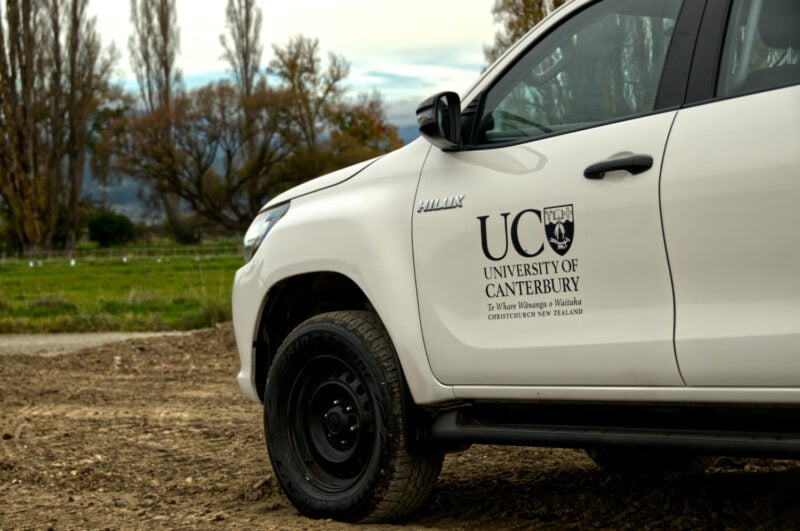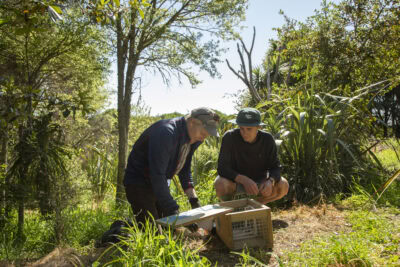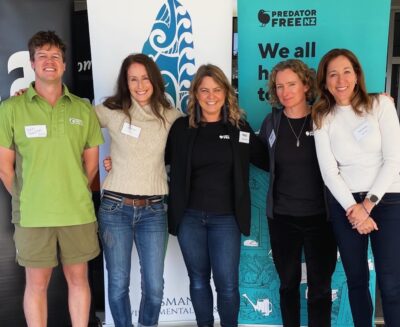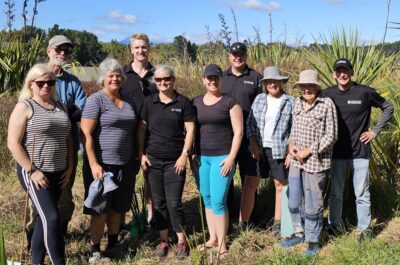They came, they saw, they planted! When the University of Canterbury’s Student Volunteer Army mobilised at Neimann Creek last month, they didn’t mess around.
It’s mid-afternoon on Friday 7 May 2021, mild and cloudy. Around 60 SVA members are piling out of UC vans. They’ve headed north for a weekend of volunteering—starting with a tree-planting session at Neimann Creek.
The long drive in cramped conditions doesn’t seem to have dampened anyone’s spirits. People look as pleased and relaxed as if they’re on holiday, with lots of laughing, joking and hugging. After a few minutes to stretch and chat, they set off down the path to where TET’s Julie Newell is waiting.
There’s a quick planting demo, a health and safety talk, and then the Army gets to work.
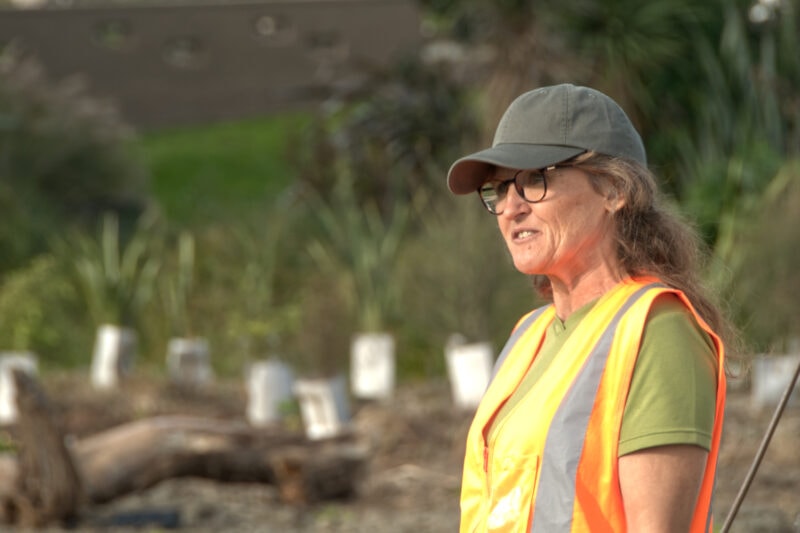
A decade of student-led community support
Founded in response to the devastating Ōtautahi/Christchurch earthquakes, the first of which occurred on 4 September 2010, the SVA brought together 11,000 people to help clean up the city. A decade on, it has continued to grow and develop. Its stated aim is to provide “meaningful volunteering opportunities for primary, secondary and tertiary-aged young people across Aotearoa”. Other universities and tertiary institutions, including Auckland, Otago, Lincoln, Victoria and Ara now boast SVA clubs as well.
The organisation has charitable trust status and although it’s guided by a board of trustees, it continues to be led by a student executive.
Luke Burke is the current President of the UC SVA. He took office in October 2020 after a year offering his services as digital marketer/cameraman. He says today isn’t the first planting session the Army’s been involved with this year.
“We started off with what we call the Big Give, where we got 300 volunteers all together in the middle of Christchurch, planting out the red zone,” he says. “As you can probably see from my cap, this is the 10th year of the Student Volunteer Army… So it was a big thing for us to be able to come back to the red zone, helping in the same place that our ‘student ancestors’ were.”
Since the 2021 Big Give, he says the SVA has run planting events almost weekly.
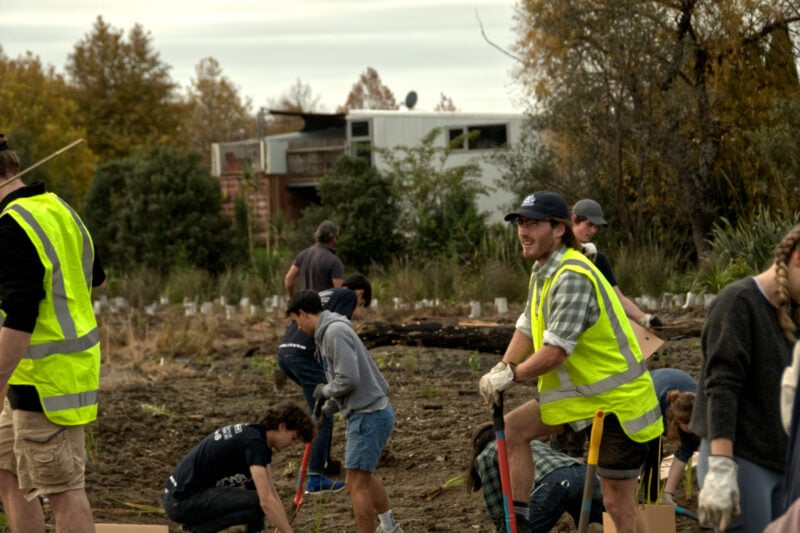
Growing expertise
The planting seems to be going excellently—a forest of plant guards and stakes is rapidly growing on formerly bare land, and Julie Newell is impressed.
“They look like a great team, they’re really motivated,” she says. “A lot of them have planted plants before so they know what they’re doing, with a really good attitude… getting stuck in.”
How many plants does she think the SVA will get in the ground in the couple of hours remaining?
“Well, we’re hoping for 1,000. We have 1,500; that’s our top goal. There’s a lot of students planting there, so fingers crossed.”
Volunteer Olivia studied engineering for a year and then switched to a Bachelor of Science in chemistry, with sociology in the mix as well. She’s been to few of the SVA’s previous planting events. Today she’s making up plant guards.
“It’s good to get outside,” she says. “Good to do good for others.”
Jonathan’s on his second event with the SVA. It’s his first time planting trees. Originally from Wellington, he says the SVA was a big factor in moving down to the Mainland.
“It’s pretty inspirational, what’s already been done,” he says. “It’s one of the reasons that I chose to come to Canterbury. I tried to do volunteering in college but I was always too busy. So I’m glad I’m getting a chance now.”

SVA volunteer Olivia 
SVA volunteer Jonathan
Support from across the student body
There seems to be quite a few engineering students in the mix, including UC SVA president Luke himself, but he says that overall, the SVA attracts a broad range of academic disciplines.
“We have a lot of engineers, because Christchurch has a lot of engineering students,” he says. “But arts and sciences, and law, management, business, it doesn’t matter. We take everybody and we have a reasonably good cross section of the university, actually.”
He’s studying mechatronics: “Robots and automation, that sort of thing. When asked if he’s planning to invent a robot that will do the planting instead of humans, his expression is deadpan.
“Well, we don’t like to publicise it, but I might be inventing a robot to take the jobs away from our human volunteers. Who knows? TBD [to be decided].” He pauses, then grins. “That’s a joke.”
His team certainly works like robots—they keep going until it’s too dark to see. The final tally of trees planted is 1,420.
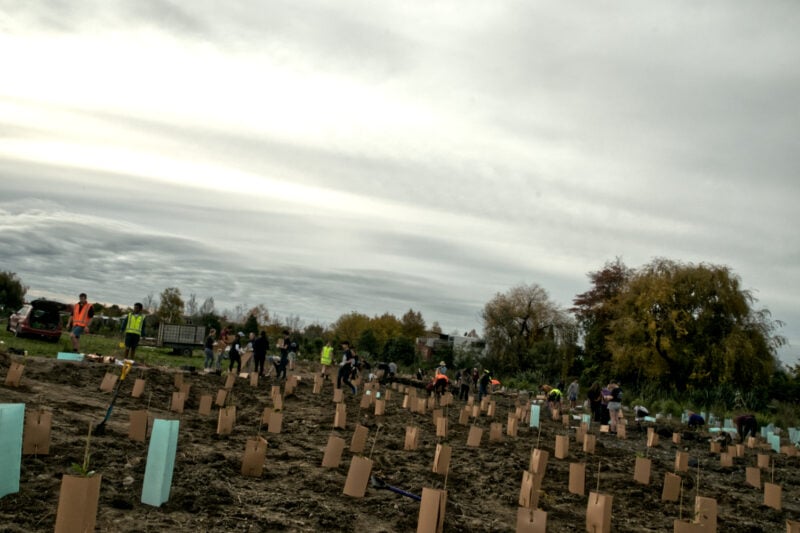
Over the course of the weekend, they’ll be helping out at the Habitat for Humanity’s second-hand ReStore in Nelson and track cutting with Keep Richmond Beautiful before jumping back in the vans for the trip home.
Now, though, it’s off to their Tahunanui accommodation for a barbeque and chill-out time.
These guys aren’t looking for accolades or praise—it seems that hanging out and doing something worthwhile together brings its own satisfacton. But it’s hugely inspiring to be around their energy and enthusiasm.
Although it’ll be up to others to maintain today’s planting effort in future, this small stretch of Neimann Creek will always bear evidence of the young people from the University of Canterbury who gave up a weekend to come and help.

Marcus and Brent from EnviroPlus, who handled the site preparation and layout 

